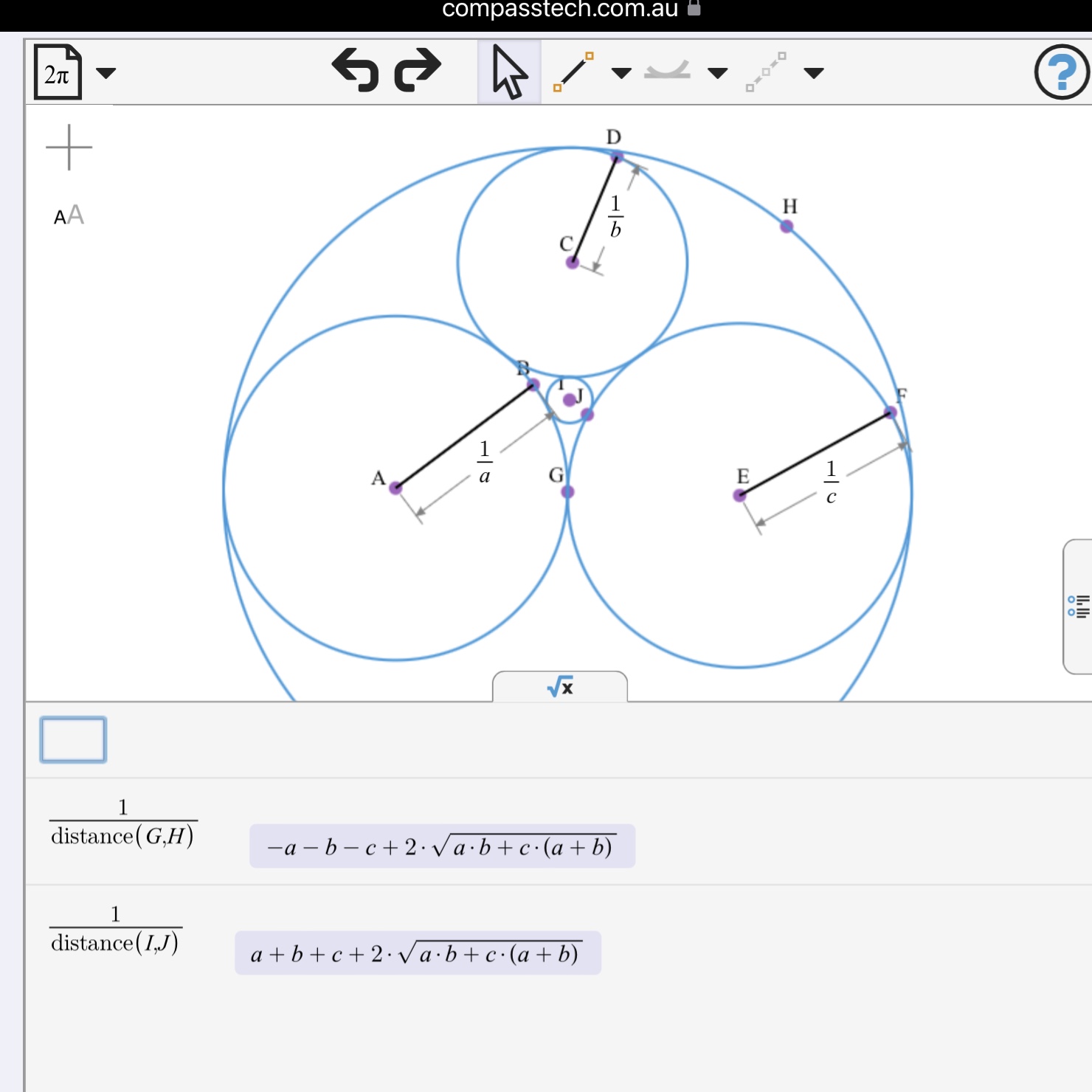©2022 Compass Learning Technologies → Geometry Expressions Showcase → Proving Descartes' Circle Theorem with GXWeb
Proving Descartes' Circle Theorem with GXWeb
Saltire Software, home of Geometry Expressions and GXWeb
A Brief Introduction to GXWeb (YouTube: 9:01)
Apollonian Gaskets and Mathematical Bubbles (YouTube: 6:55)
Automated Theorem Proof with GXWeb
141 Theorems Proved Using GXWeb
GXWeb is a free, browser-based mathematical tool offering constraint-based dynamic geometry built upon a foundation of computer algebra.
GXWeb gives both numeric and symbolic measurements taken from your readily constructed dynamic model. The symbolic measurements are exact, computed algebraically, and hence provide a form of automated proof of theorems.
Descartes' Circle Theorem offers a lovely example of the power of GXWeb as a tool for automated theorem proof.
|
Descartes' (Circle) Theorem describes a beautiful and perhaps surprising relationship between tangential circles: in general, for any three circles tangent to each other, two other circles exist (one inner and the other bounding the three) and all are related by a quadratic equation. This relationship is described most easily in terms of the curvature of each circle, where curvature is defined as the inverse of the radius. If the circles have curvature a, b, c and d, then A little rearrangement allows us to find the curvature (and hence, radius) of the inner and outer tangent circles given any three (here the greater of the two solutions describes the curvature of the inner circle and the lesser value (possibly negative) relates to the outer bounding circle): |
|
| Curvature = Curvature = Curvature =
|
\[2\cdot (a^2+b^2+c^2+x^2) = (a+b+c+x)^2\]\[=> x = a + b + c \pm 2\cdot \sqrt{(a\cdot b + a\cdot c + b\cdot c)}\]\[=> (-1,15)\]
GXWeb Kissing Circles Collection
GXWeb Kissing Circles Challenge
GXWeb Descartes Circle Theorem
GXWeb Farey Numbers and Kissing Circles
The Arbelos: Shoemakers' Knives and Kissing Circles
GXWeb Apollonian Bubbles and Kissing Circles
Construct your own Model with GXWeb
©2022 Compass Learning Technologies → Geometry Expressions Showcase → Proving Descartes' Circle Theorem with GXWeb
